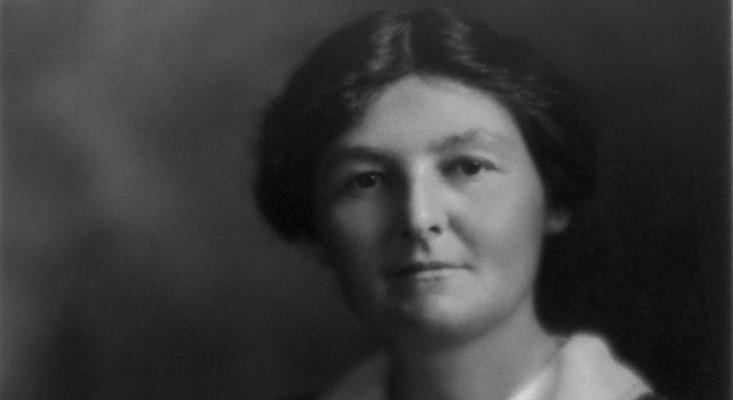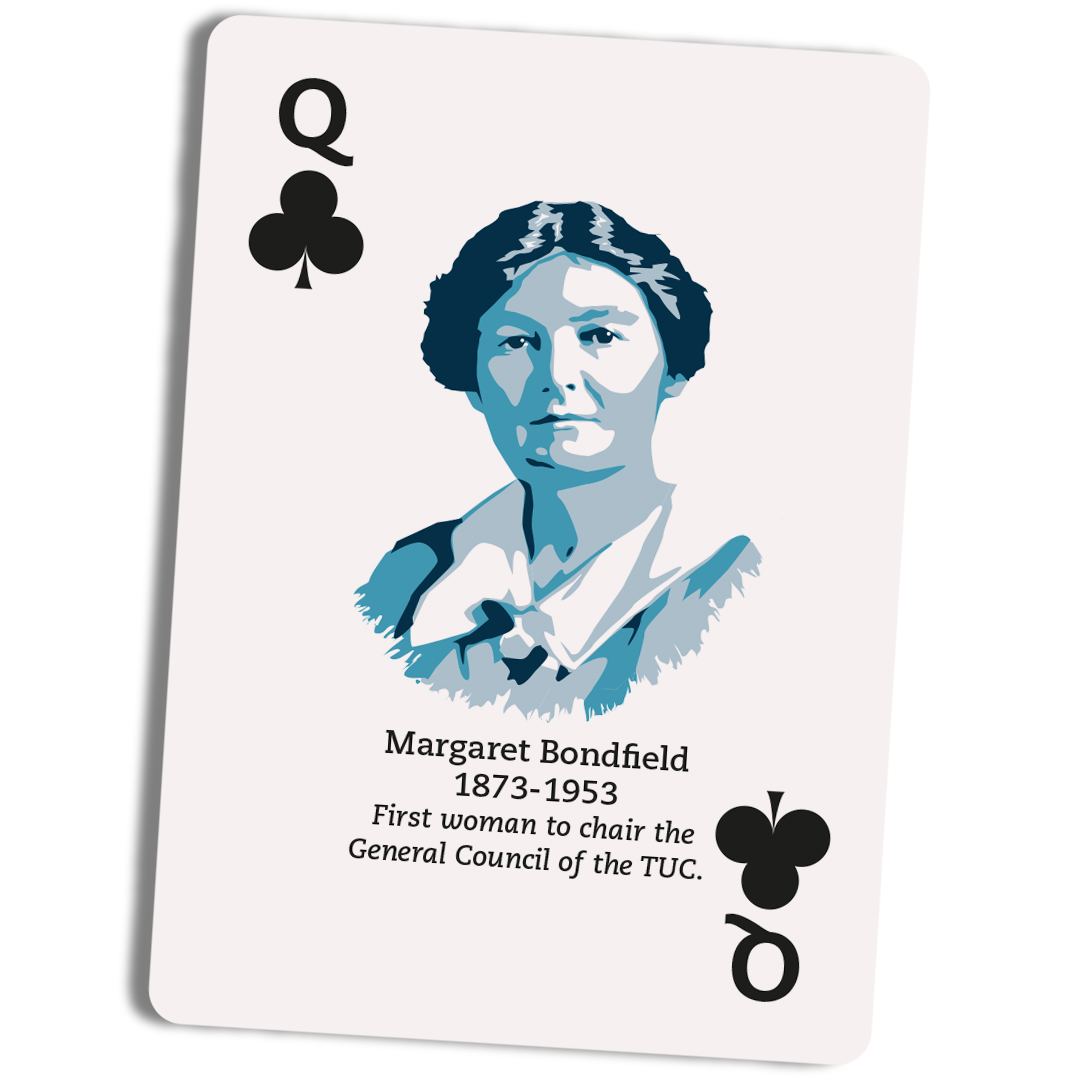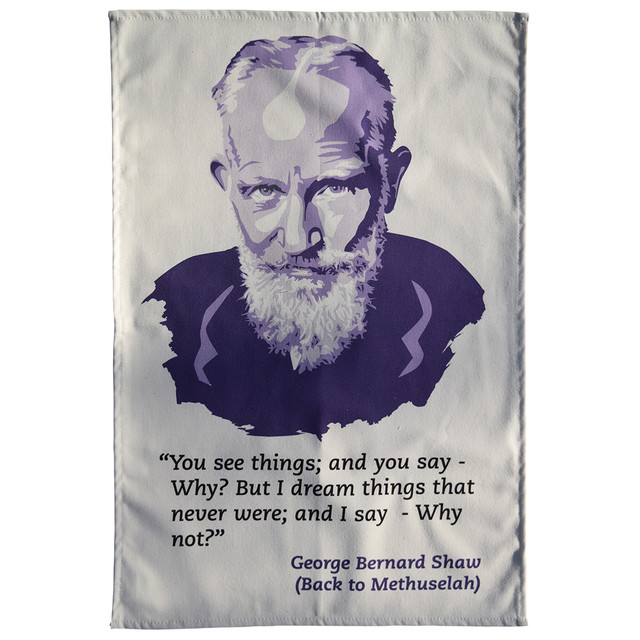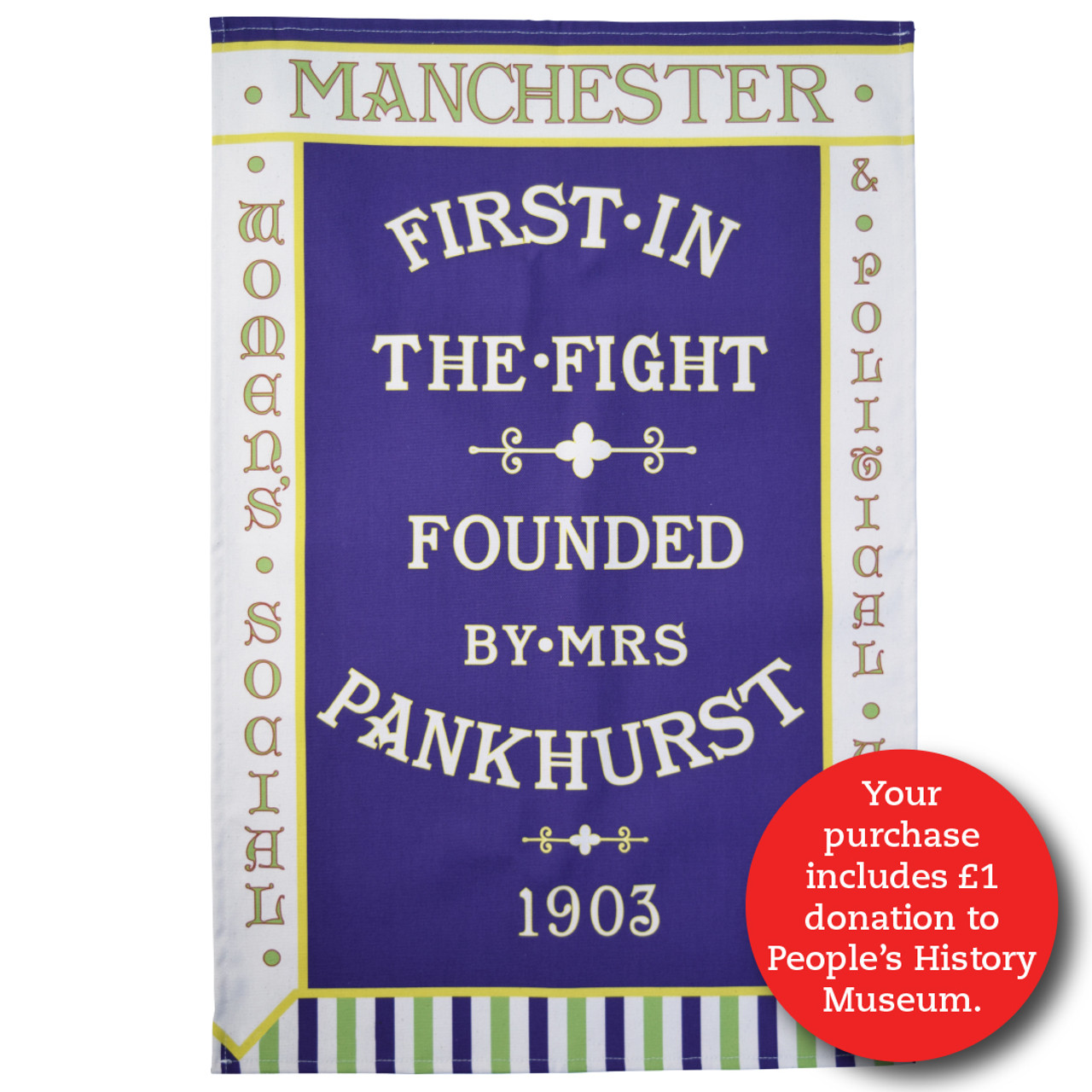Margaret Bondfield: Trailblazer to the Cabinet
Posted by Pete on 17th Mar 2024
A shopworker from Somerset was radicalised to join a Labour government

Margaret Bondfield in 1919
"I had no vocation for wifehood or motherhood, but an urge to serve the Union."
Margaret ‘Maggie’ Bondfield was the first woman to become a cabinet minister in British history.
She was also a leading socialist, feminist, and trade unionist throughout the first half of the twentieth century.
Although somewhat less well-known today than figures such as Ellen Wilkinson and Barbara Castle, Bondfield was one of the most remarkable figures in the history of the British labour movement.
Margaret Bondfield, as featured in our International Labour Movement playing cards
See the International Labour Movement Playing Cards
Born today in 1873, in Chard, Somerset, Margaret Bondfield was the tenth of eleven children.
She grew up in poverty – not because her parents didn’t work, but because the working class was oppressed and exploited in Victorian Britain.
Margaret’s dad, William, was a lacemaker and a lay preacher. He was also a political radical, having fought against aristocratic politics as part of the Anti-Corn Law League earlier in the nineteenth century.
This radical heritage was an important part of Margaret’s political formation, but so was her own experience of life in the working class.
Margaret Bondfield began work at 13, and soon became an apprentice at a draper’s shop. This was the start of a formative and increasingly radical career as a shopworker.
Bondfield worked as a live-in shop assistant at various shops in the town of Brighton.
The ‘living-in’ system was a widespread form of coercion used against shopworkers in nineteenth-century Britain.
It compelled workers to live in their employer’s house, exposing them to his – it was almost always a ‘him’ – constant economic and non-economic control. The whole arrangement was degrading and oppressive.
Subjection to ‘living-in’ and the wider hardships of working-class life radicalised Margaret Bondfield.
After moving to London, Bondfield joined socialist intellectuals such as George Bernard Shaw in the Fabian Society
See the George Bernard Shaw tea towel
In 1894 she moved to London, where one of her brothers was already active as a trade unionist, and quickly joined the labour movement herself.
Bondfield got to work trying to grow the ranks of the NAUSAWC, the main shopworkers’ union in England. She travelled across the country, constantly trying to organise more workers.
Intellectually, Bondfield was a regular contributor to The Shop Assistant magazine, denouncing the conditions imposed on workers in the sector.
In London, she also grew close to the Fabian socialist circle around middle-class intellectuals including Beatrice Webb and George Bernard Shaw.
Bondfield’s combined role as a working-class union organiser and a budding socialist intellectual meant she was right in the middle of things when the Labour Party was formed in 1900.
In 1899, Bondfield had become the first woman to be elected to the Trades Union Congress’ (TUC) annual conference, on behalf of NAUSAWC, and in that role she took part in the historic 1900 vote in Plymouth, when the labour movement created the ‘Labour Representation Committee’ – direct forerunner of the Labour Party – to stand working-class candidates for Parliament.
As a woman, however, Bondfield’s increasing political activism clashed with the disenfranchisement of women in Britain.
Responding to this injustice, she became a devout supporter of women’s suffrage from the 1900s, collaborating with organisations like the Pankhursts’ WSPU.
Margaret Bondfield supported women's suffrage and collaborated with the Women's Social and Political Union (WSPU)
See the Manchester WSPU tea towel
However, Bondfield’s working-class, socialist politics meant she was never an uncritical supporter of mainstream women’s suffrage in Edwardian Britain, which was often a very middle-class movement.
In particular, Bondfield called out the WSPU’s pre-1918 policy of calling for the enfranchisement of women on the same terms of men – that is, with a property bar that excluded millions of poor and working-class voters.
Bondfield memorably wished the suffragettes good luck insofar as they resisted sexism, but declared,
"…don’t let them come and tell me that they are working for my class."
In 1914, Bondfield sided with the likes of Keir Hardie in opposing Britain’s entry into World War One, and she continued to advocate for peace during the conflict.
After the war, Bondfield, in quick succession, became the first woman to be elected to the TUC General Council and then one of the first three women to be elected Labour MPs.
Bondfield continued to rise in the Labour Party until, in 1929, the newly elected Labour Prime Minister, Ramsay MacDonald, appointed her as Minister of Labour in his short-lived government.
This made Bondfield the first ever woman to be a cabinet minister in Britain.
It is her most remembered achievement but, as you now see, it was just one step in a whole lifetime of working-class and feminist activism.



